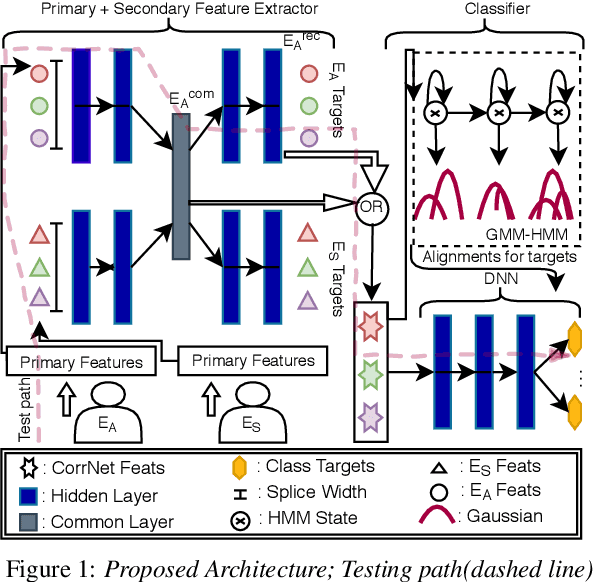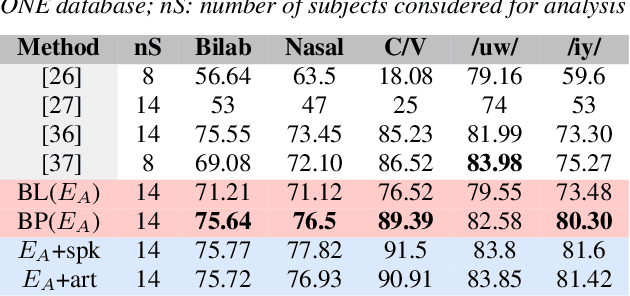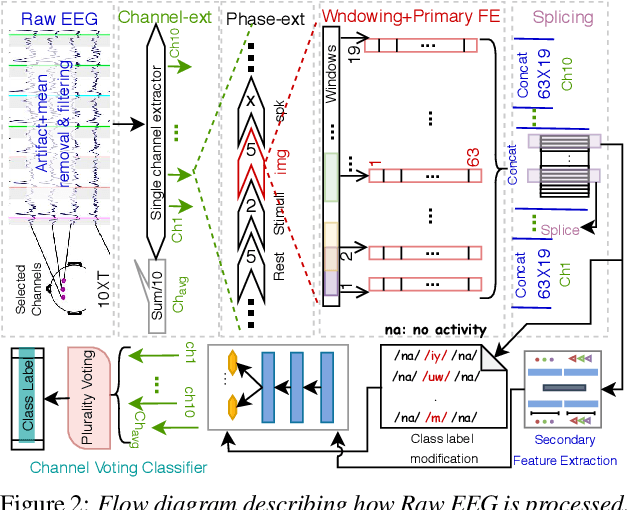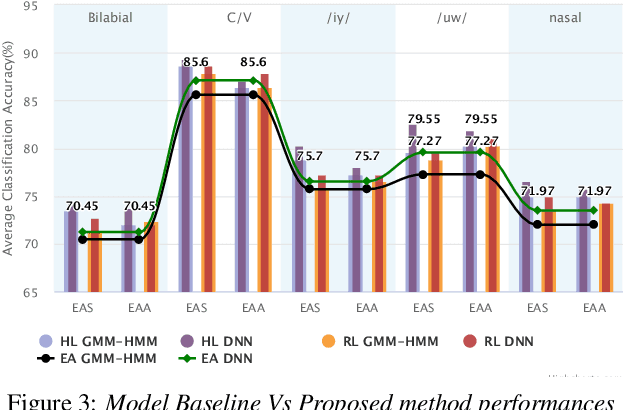Correlation based Multi-phasal models for improved imagined speech EEG recognition
Paper and Code
Nov 04, 2020



Translation of imagined speech electroencephalogram(EEG) into human understandable commands greatly facilitates the design of naturalistic brain computer interfaces. To achieve improved imagined speech unit classification, this work aims to profit from the parallel information contained in multi-phasal EEG data recorded while speaking, imagining and performing articulatory movements corresponding to specific speech units. A bi-phase common representation learning module using neural networks is designed to model the correlation and reproducibility between an analysis phase and a support phase. The trained Correlation Network is then employed to extract discriminative features of the analysis phase. These features are further classified into five binary phonological categories using machine learning models such as Gaussian mixture based hidden Markov model and deep neural networks. The proposed approach further handles the non-availability of multi-phasal data during decoding. Topographic visualizations along with result-based inferences suggest that the multi-phasal correlation modelling approach proposed in the paper enhances imagined-speech EEG recognition performance.
 Add to Chrome
Add to Chrome Add to Firefox
Add to Firefox Add to Edge
Add to Edge